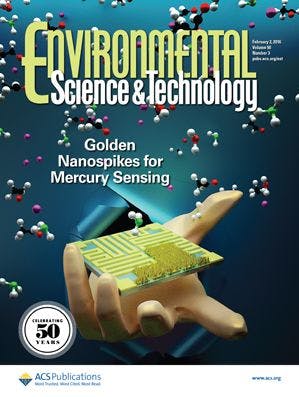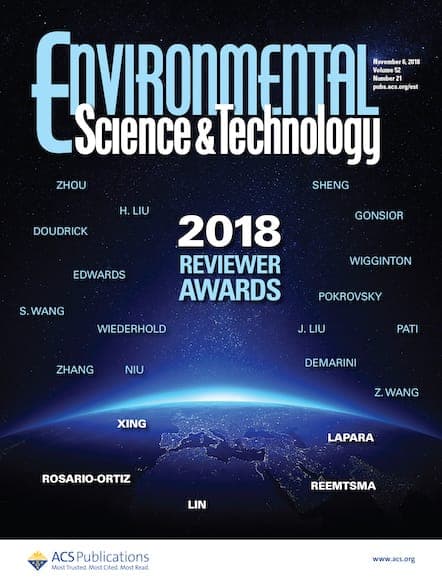David Sedlak is off to a great start in 2016. The Editor-in-Chief of Environmental Science & Technology was recently elected to the National Academy of Engineering and his TED Talk, “4 Ways We Can Avoid a Catastrophic Drought” is a hit on YouTube. Check out David Sedlak’s TED Talk and a revealing follow-up interview on recycled water technology, conservation, […]


Check out David Sedlak’s TED Talk and a revealing follow-up interview on recycled water technology, conservation, the crisis in Flint, Mich., and the secret to giving a great presentation.
You’ve been studying recycled water technology for 15 years. How has the space changed in that time? What trends have you seen emerge?
David Sedlak: The technologies that support water recycling have made incremental progress that has reduced costs and increased reliability. But this does not explain the fundamental shift that has occurred over the past 15 years. In particular, we are seeing investments transition from non-potable water reuse (i.e., reuse of municipal wastewater for landscape irrigation, agriculture and industrial uses) to potable water reuse. I attribute this to a recognition of the high costs of building non-potable water reuse systems in crowded cities and an increased confidence, arising from decades of operating experience, in the ability of the technologies that support potable water reuse, such as reverse osmosis membranes and advanced oxidation processes.
What’s the bigger challenge in addressing our water needs: Creating the technology and infrastructure to safely and efficiently recycle water, or convincing cities and individuals that recycled water is a safe, viable water source?
David Sedlak: Although there is still plenty of room for improving the technologies used for water recycling, the real challenge is to change the mindset of water resource planners. Many of these specialists were taught that imported water would always be available. As climate change, population growth and controversies over water rights limit the reliability of imported water they will need to access local water sources. For communities that turn to potable water reuse, city leaders will need to learn how to communicate with the public; government officials will need to create effective regulatory systems; and members of the public will need to participate in the design of the system from the start.
How essential is conservation to addressing a city’s water challenges? Is it possible for the world’s cities to meet their long-term water needs without it?
David Sedlak: Conservation is important, but it will not solve our water supply challenges. Cities that have yet to grapple with water supply challenges can take some simple, inexpensive steps to realize substantial water savings. But cities that have already experienced water stress (e.g., Los Angeles, Melbourne) are already pretty efficient. They might be able to reduce their per capita water use by another 25% or so, but eventually they will run up against a point of diminishing returns, where further water reduction makes the city less comfortable (e.g., cutting back on parks and trees tends to make cities hotter in summer). If cities cut back too far on water use they will need to redesign their sewer systems to ensure that their wastewater will continue to travel to their sewage treatment plants. And of course, those 25% reductions in per capita water use will be counterbalanced by increases in population.
You recorded your TED talk before the water crisis in Flint became widely known. What can water-starved cities learn from the situation in Flint? Are there best practices for balancing the need for cost-effective water sources with public health concerns?
David Sedlak: Flint is a warning that failure to invest in water infrastructure has real consequences. It also teaches us that we need to pay attention to communities that lack the resources needed to adapt to changing conditions. I am confident that the world’s wealthy cities will figure out ways to keep clean water flowing. It is the cities that lack the financial resources and institutional capacity to adopt modern technologies that will suffer from an underinvestment in water infrastructure. If drinking water is a human right, then investments in water systems of struggling communities are a national obligation.
Are you an optimist when it comes to people’s ability to overcome environmental challenges like water shortages? Why or why not?
David Sedlak: In terms of urban water supply, I am an optimist. There is no reason that any city in the world ever needs to run out of water. If people can afford food, cell phones, cars, and everything else that we associated with modern life then they can afford a safe, plentiful water supply. I wish I could say the same for agriculture. Water shortages will continue to plague farmers, compromising our ability to feed growing populations. In my home state of California, climate change may mean that our farmers will have to learn how to grow food with less water. Or we may need to stop growing certain types of crops. Fortunately, no one in America will go hungry because of a drought in California because many of these corps can be grown elsewhere. The situation is different for cereal crops. I believe that we need a second green revolution to address the effect of droughts and other stresses on this important commodities.
You did a great job presenting your ideas in your TED talk. What advice do you have for scientists looking to hone their ability to speak in front of an audience?
David Sedlak: Find your enthusiasm. If you believe in what you are saying your love of the subject will shine through. And of course, practice, practice, practice.

